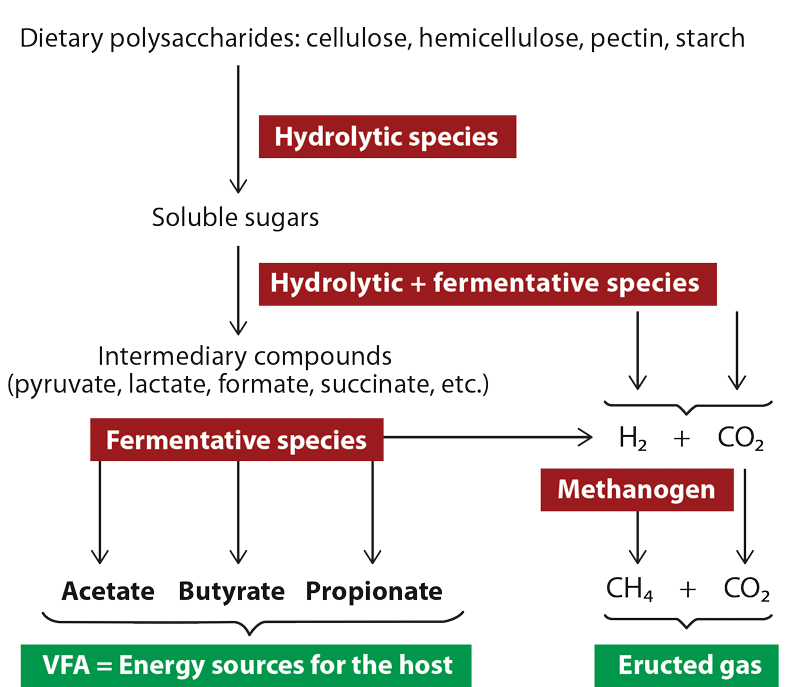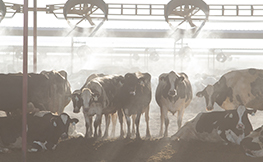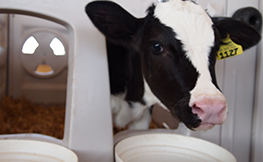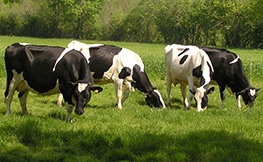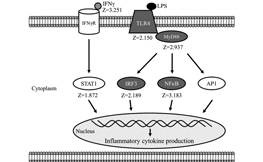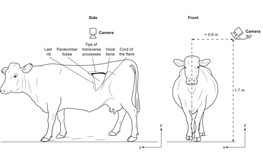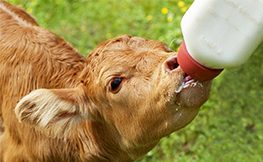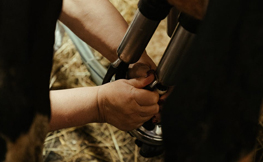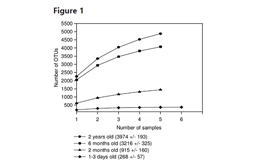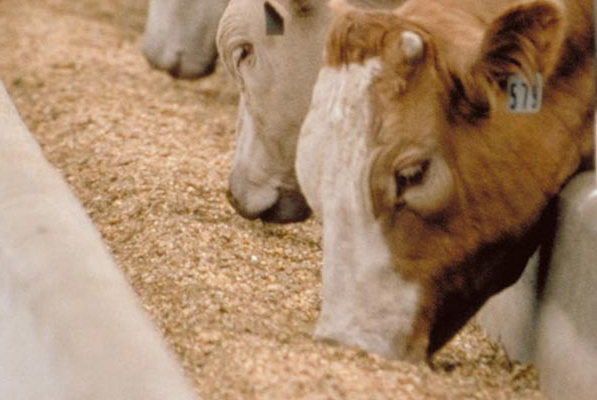
Rumen Health Technical Guide
Leading ruminant experts have written the Rumen Health Technical Guide. This resource is free to veterinarians, nutritionists and producers, request a copy today.
 Get a copy
Get a copy
Rumen Fermentation
A ruminant animal’s digestive system has evolved to convert feed into energy.
Rumen fermentation is a process that converts ingested feed into energy sources for the host. Fiber scratches the rumen wall to start a series of contractions. These contractions lead to rumination, which is the process that physically breaks down the fiber source. Feed is then regurgitated, chewed and swallowed usually 50 to 70 times during rumination before passing through the next compartment of the stomach.
Microbial populations ferment feed and water into volatile fatty acids (VFAGlossaryView allVolatile Fatty Acid (VFA)
The microbial ecosystem in the rumen ferments carbohydrates into VFAs. These products are absorbed though the rumen wall into the blood and used like energy source for the animal. The three main VFAs are acetic acid, butyric acid and propanoic acid.) and gases (methane and carbon dioxide). When fermentable carbohydrateGlossaryView allFermentable carbohydrate
Sugars easily fermented by the digestive system. They are composed of short chains of sugar molecules easily broke down by bacteria. They can contribute to gastrointestinal problems. in the diet is digested too rapidly, the bacteria will increase the production of both VFA and lactic acid.12ReferenceView allNocek J. E. 1997.
To sustain growth and the activity of fibrolyticGlossaryView allFibrolytic
Capacity to hydrolyze fibers. microbes, it is crucial to maintain ruminal pH above 5.8, which will prevent the decline of fiber digestion and subsequent problems.13ReferenceView allZebeli Q., Metzler-Zebeli BU. 2012.
Strategies that limit acid load, notably by competing with lactate producing bacteria, help to optimize fiber digestion.14ReferenceView allChaucheyras-Durand F., Chevaux E., Martin C., and Forano E. 2012.
Frequent changes in management or diet can alter the balance of the microbes and consequently, the profile of the fermentation end products.
Rumen fermentation pathways
